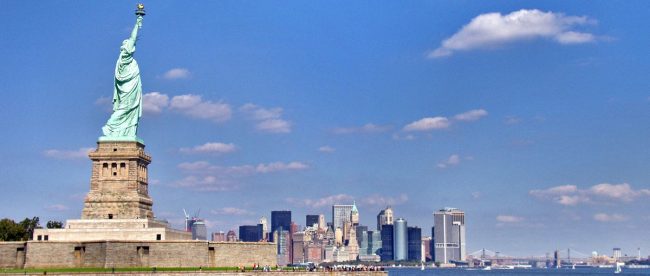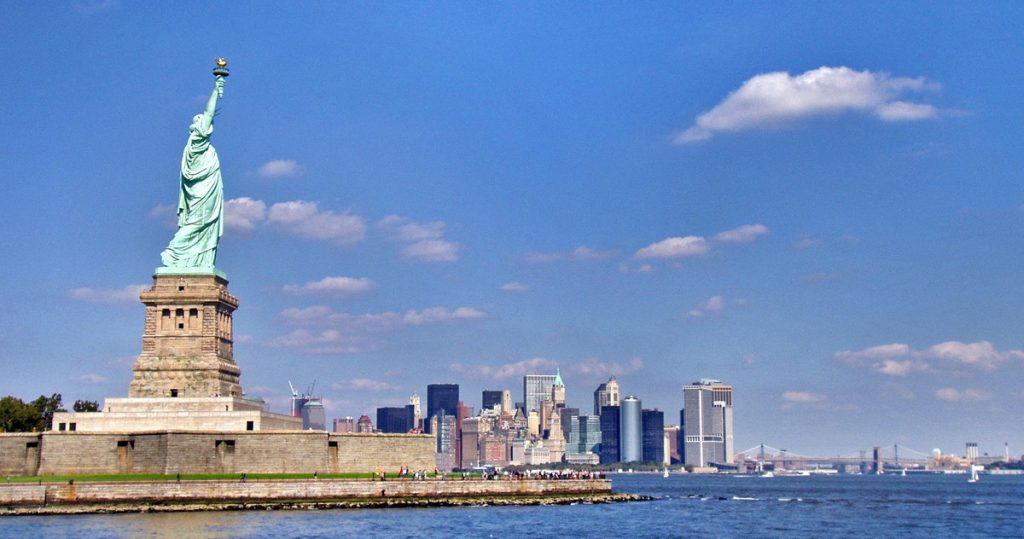Why You Can’t Visit Liberty’s Torch


The Statue of Liberty has been towering over New York Harbor since October 28, 1886. The highest point of the sculpture is its torch, held in Lady Liberty’s outstretched right arm. From ground to the torch — and this includes the pedestal upon which the statue stands — the trip skyward is 93 meters; that is, 305 feet and one inch.
If you visit the Statue today, you can walk up a rather standard staircase to reach the top of the pedestal; from there, a very narrow spiral staircase leads the way to the crown, if you want to continue your journey. That, for all intents and purposes, is the top of the climbable Statue — unless you do something illegal and stupid, you’re not getting any higher up. But that wasn’t originally the case. There’s also a very narrow staircase leading up to the torch; once you ascend those stairs, you’re brought to a wrap-around observatory just under the 24-carat-gold covered flame. But it’s closed to visitors.
And the reason why? There are a lot of theories out there, but the real credit goes to an oft-forgotten attack on America — one which occurred more than a century ago.
For the first two-plus years of the First World War, the United States took a posture of neutrality, effectively staying out of what President Woodrow Wilson saw as Europe’s problem. Neutrality, though, didn’t mean that the U.S. had to cut off Europe altogether; America kept on trading with Europe like it always had. But when the British navy blockaded German ports in 1915, American merchants found it difficult to trade with their German partners — that’s what blockades do, after all. Merchants, and in particular munitions merchants, kept selling their wares, but because only the Allies had access to American ports and vice versa, America became a de facto munitions supplier to Great Britain and its allies.
Germany responded by looking for ways to cut off this now one-sided supply line. And it turned out that the United States infrastructure had a few significant points of weakness. One of them was a man-made island in New York Harbor called “Black Tom Island,” originally designed to help prevent harbor accidents. (“Black Tom” was a rock which ships all-too-often ran into; in the late 1880s, to prevent such mishaps, local authorities created a landfill around it, converting the area into a 25-acre island.) Black Tom Island was a great place to store explosives — it was connected to the New Jersey shore by a short railroad yet still accessible by cargo ships. And perhaps more importantly, it was far enough offshore where if something were to go wrong, the explosions from the munitions stored there probably wouldn’t hurt too many people.
And at 2 AM on July 30, 1916, something did go wrong. German operatives sabotaged operations at Black Tom Island, blowing up the munitions. Wikipedia describes the scale of the explosions:
Fragments from the explosion traveled long distances, some lodging in the Statue of Liberty and some in the clock tower of The Jersey Journal building in Journal Square, over a mile away, stopping the clock at 2:12 am. The explosion was the equivalent of an earthquake measuring between 5.0 and 5.5 on the Richter scale and was felt as far away as Philadelphia. Windows were broken as far as 25 miles (40 km) away, including thousands in lower Manhattan. Some window panes in Times Square were shattered. The stained glass windows in St. Patrick’s Church were destroyed. The outer wall of Jersey City’s City Hall was cracked and the Brooklyn Bridge was shaken. People as far away as Maryland were awakened by what they thought was an earthquake
The attack claimed four lives and injured hundreds of others, a relatively lucky result given the damage articulated above. As for the Statue of Liberty, its damage bill came in at the present-day equivalent of more than $2 million, hardly an insurmountable sum. But that number accounts for the damage that could be repaired — and not all of it could be fixed. The right arm of the Statue was hit hard by the blasts, and fixing it fully proved impossible. As a result, the stairway in Lady Liberty’s arm leading to the torch was deemed unsafe for regular use.
Access to the torch has been closed to the public ever since.
Bonus fact: During repairs of the Statue of Liberty in 1982, workers discovered that the right arm had another problem — it was installed 18 inches from where it should have been placed. That wasn’t the only problem, either; the head was positioned two feet off-center, according to Edward Cohen, a consulting engineer (via the New York Times). The repair crew was able to rectify these problems during a four-year renovation following the 1982 inspection. (They weren’t able to fix the staircase to the torch, though.)
From the Archives: Give Me Liberty or Give Me Triple Sevens: The problem with the 2010 stamp honoring the Statue of Liberty.
